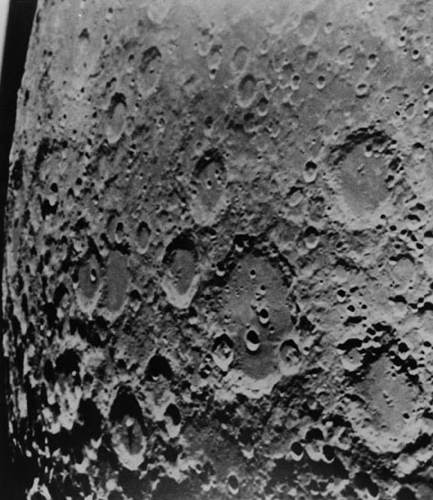|
D2. MOON This photo of the moon’s surface is taken through the 40 inch telescope at Yerkes Observatory, University of Chicago. It illustrates a different sort of fractal. We can think of the round moon being dotted with circular craters. Each of these craters in turn is dotted with smaller craters, caused by meteor impacts. So we have the beginning of a fairly random self-similarity, characteristic of fractals. This (ideal) fractal is discrete in the sense that it is made up of discrete, non-overlapping circles. |
